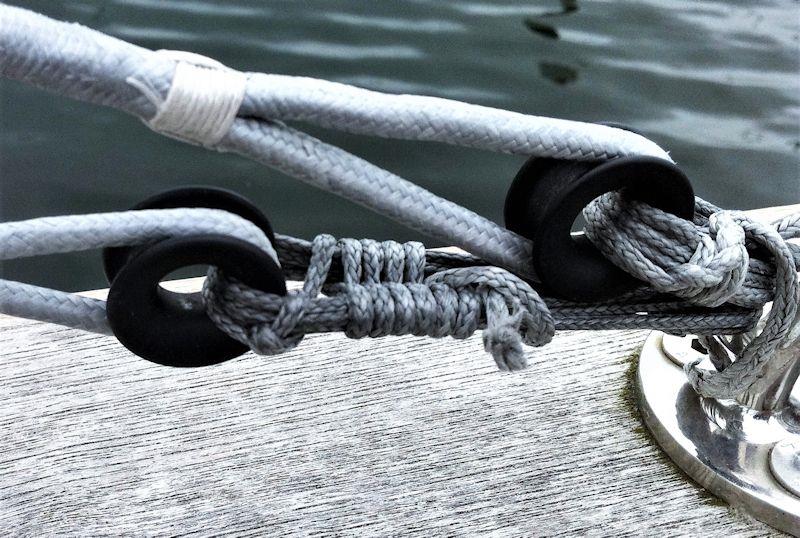
Would you trust Dyneema with your lifelines?
by Kerri Robson 4 Feb 2019 01:00 PST

Ultrawire Lifeline on 'Gloria' © upffront.com
Lifelines are typically made of wire, however, as the sailing industry modernises, more and more people have been converted to the use of synthetic composite lifelines, such as Dyneema®.
Although often overlooked and forgotten, lifelines are one of the most critical safety components on our boats. Whilst they are something to lean against whilst cruising, or hiked from when racing, their most important role is to act as the last and final attempt to keep your crew member safely onboard your boat.
Lifelines which are sometimes referred to as guardrails line the perimeter of the boat. They are designed to absorb and dissipate energy into the deck following the impact of a high dynamic load e.g. the weight of a crew member.
As a result, it is vital that lifelines are set up correctly: they must be properly tensioned (as taught as possible without bending your stanchion, to ensure energy is immediately transmitted to the strongest point in the system the pulpit/pushpit), fully adjustable and checked annually, with full replacement every 8 10 years.
What are the advantages of Dyneema® lifelines?
Dyneema® is an extremely lightweight and tough high-tech material that stands the test of time. Formed from HMPE (high modulus polyethene), Dyneema® offers incredible strength for its weight and size. For example, at upffront.com, we manufacture our lifelines from Gottifredi Maffioli's Ultrawire, and the resulting Dyneema® lifelines are up to 80% lighter and 4 times stronger than traditional wire lifelines.
On top of this, Dyneema® also boasts other benefits
Dyneema® is softer:
- Easier to lean against when cruising, Dyneema® is far more comfortable to sit against than wire lifelines.
- Kinder on the hands.
- Not as abrasive on the sails a fibre on fibre interaction is far less harsh on your sail material than a wire lifeline, prolonging the life of your sails.
Dyneema® is safer:
- Easier to inspect and monitor - when Dyneema® wears it is obvious, as it is possible to see chafe and fuzzing on the cable. Stainless steel lifelines are often coated in a plastic coating which makes it impossible to easily examine the condition of the wire and terminations underneath.
- Safety is never compromised - for example, we use a double braid with a Dyneema braided cover on an SK99 core. Abrasion can easily be spotted in the cover without the integrity of the core being compromised and action can be taken in good time.
- No corrosion issues - Dyneema® does not corrode or rust.
- Dyneema® is also very abrasion resistant, resistant to UV rays and has a life equal to that of its wire counterpart.
As a boat owner, our Dyneema® lifelines can be really appreciated; whilst the grey colour makes them quietly under-stated, the moment they are touched they will pique the interest of passers-by in the marina!
Overall, transitioning to Dyneema® lifelines provides significant benefits and is a cost-effective and inexpensive upgrade. So, if time is coming up to replace your lifelines, why not give Dyneema® a try? Get in touch with us via our Running Rigging Enquiry Form.